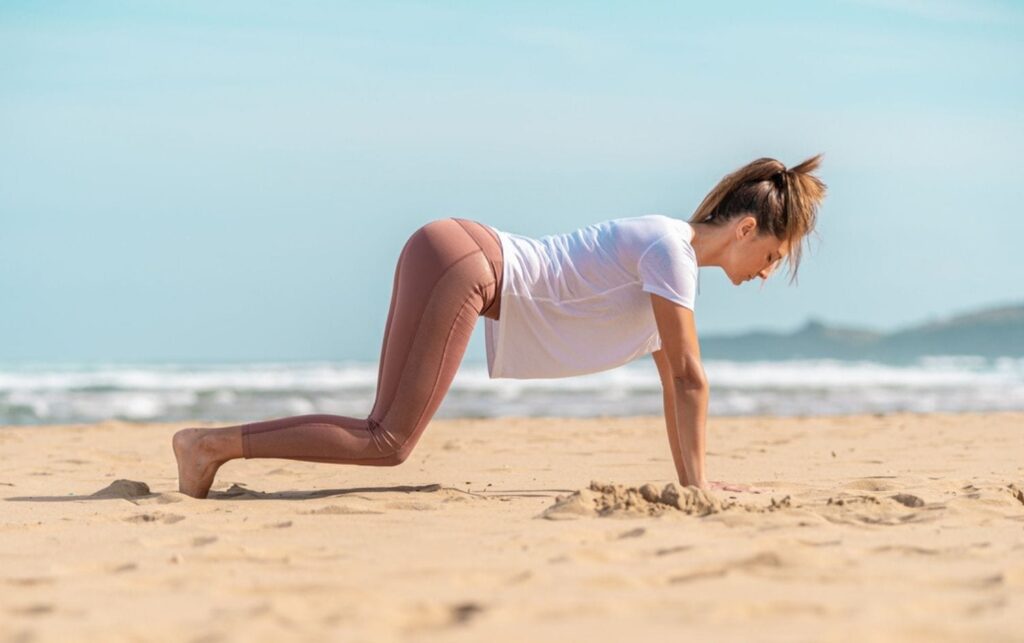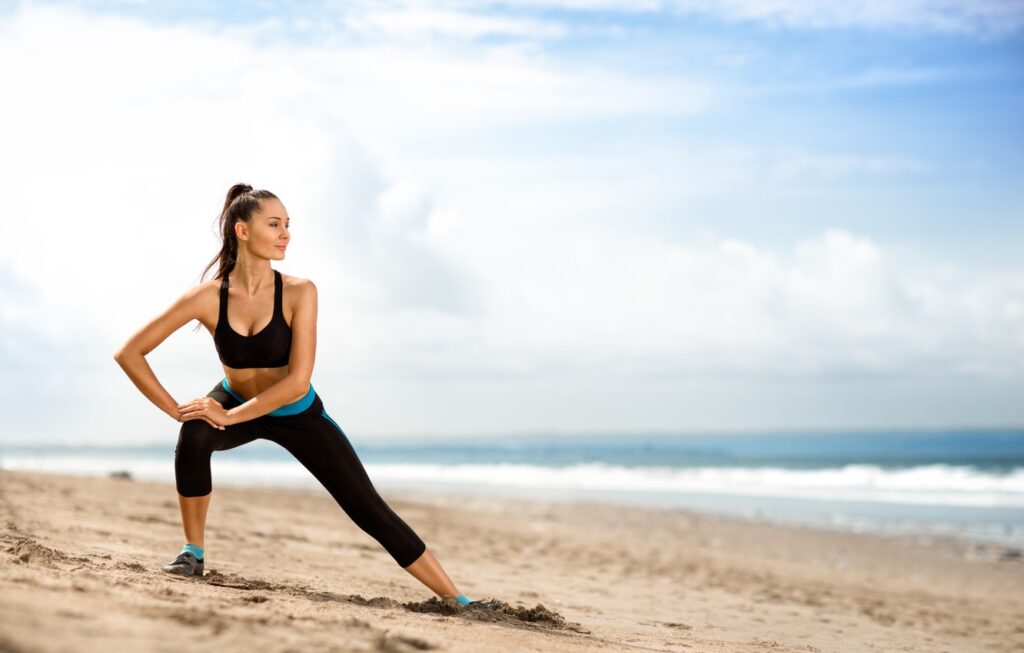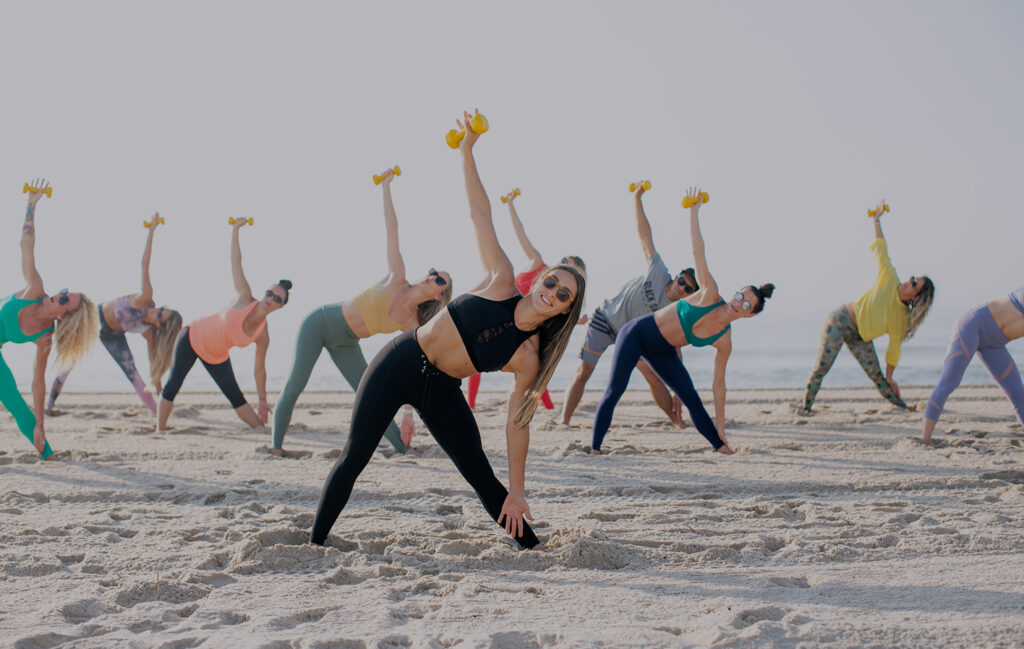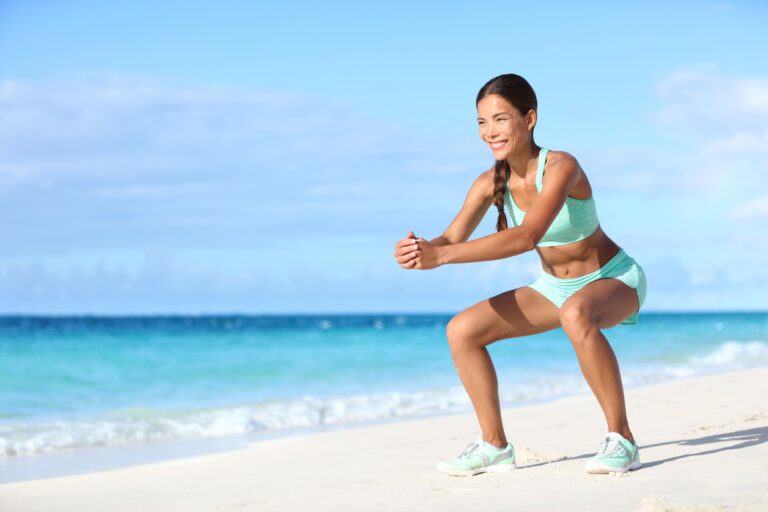Any time you have the opportunity to exercise on sand you should take it! We love beach workouts for how intensely you can train in a short time, the balance benefits your reap and of course the dose of fresh air. Read on for the low down on sand workouts and how you can get it in this summer…
WHY SAND WORKOUTS ARE SO EFFECTIVE
If you’ve ever slugged bulky chairs down a beach, you know that walking on sand is no easy feat. That’s because you have to work against significantly more resistance with each step than you normally have to on hard surfaces like pavement, and you’re engaging many more muscles to stay balanced. From a fitness perspective, this is a blessing that helps you burn more calories, improve agility and prevent injury.

BENEFITS OF BEING ACTIVE ON THE BEACH
- Low impact – The softer surface of sand makes for a lot less impact on ailing joints. This translates to less injury and a greater likelihood that you’ll come back for another beach workout in the future.
- Strengthens smaller ankle and foot muscles – The constant shifting and surface variety of a sand workout engages smaller muscles throughout your feet, ankles and legs. Over time this improves your balance, muscle tone and explosive power.
- Improves form – Sand is a good place to work on running form and quick lateral movements because you can truly feel the ground beneath you and allow your body to stride along more lightly. We like to use beach runs to practice shortening our stride and lessening the amount we land on our heels. Practicing yoga on sand is another great way to challenge yourself and improve posture. The additional balance challenge of being on sand immediately deepens your awareness of the muscle groups that must activate more deeply to support your twists and inversions.
- Blasts calories – Studies suggest running on sand uses 1.5x – 2x as much energy as running on pavement because each movement requires more effort to complete (i.e. it’s a challenge to pull your feet out of deep, dry sand).

SAND-SPECIFIC WORKOUT TIPS
- Go Easy – Ease into it at first to let your body adjust and prevent sudden injuries. For runners this means opting for a shorter distance than you normally run on paved surfaces, and for cross-trainers and yogis, it means a shorter sweat session than usual.
- Stick to the dry sand – If lucky enough to be near the ocean, note that the best sand for running and agility drills is the dry sand that is further from the breaking waves. Choosing this sand over the wet, wave-proximate sand ensures you won’t be running on a surface that is too hard or slanted, which can lead to injury.
- You choose: barefoot or shoes – The jury is still out on whether or not you ‘should’ wear shoes while exercising on the sand, so we recommend sticking with whatever is normal for you. If it’s an especially hot day or I’m on a beach with a lot of debris, I wear lightweight sneakers to protect my feet.
- Take it all in – Remember to have fun and take some deep breaths! Being active in the outdoors is a much a meditation as it is a workout – don’t deprive yourself.

ALTERNATIVE SAND WORKOUTS
If you don’t live near a beach, don’t fret! There are a lot of places you can find sand – like your local outdoor volleyball court, the long jump pit at the track of your neighborhood high school or college, and maybe even the park sandbox that kids frequent.

